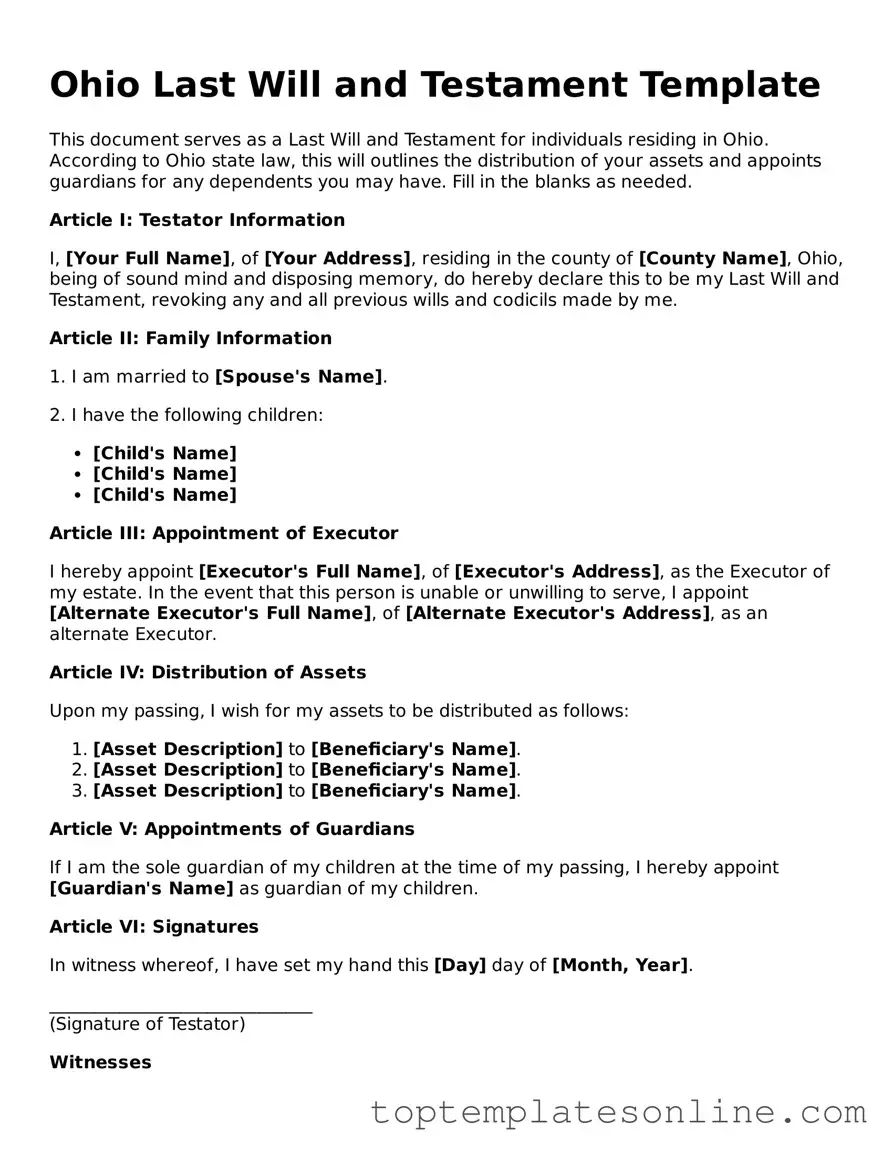Blank Last Will and Testament Template for Ohio State
A Last Will and Testament form in Ohio is a legal document that outlines how a person wants their assets distributed after their death. This form also allows individuals to name guardians for their minor children and specify their final wishes. Understanding this document is essential for anyone looking to ensure their wishes are honored and their loved ones are taken care of.
Customize Last Will and Testament Here
